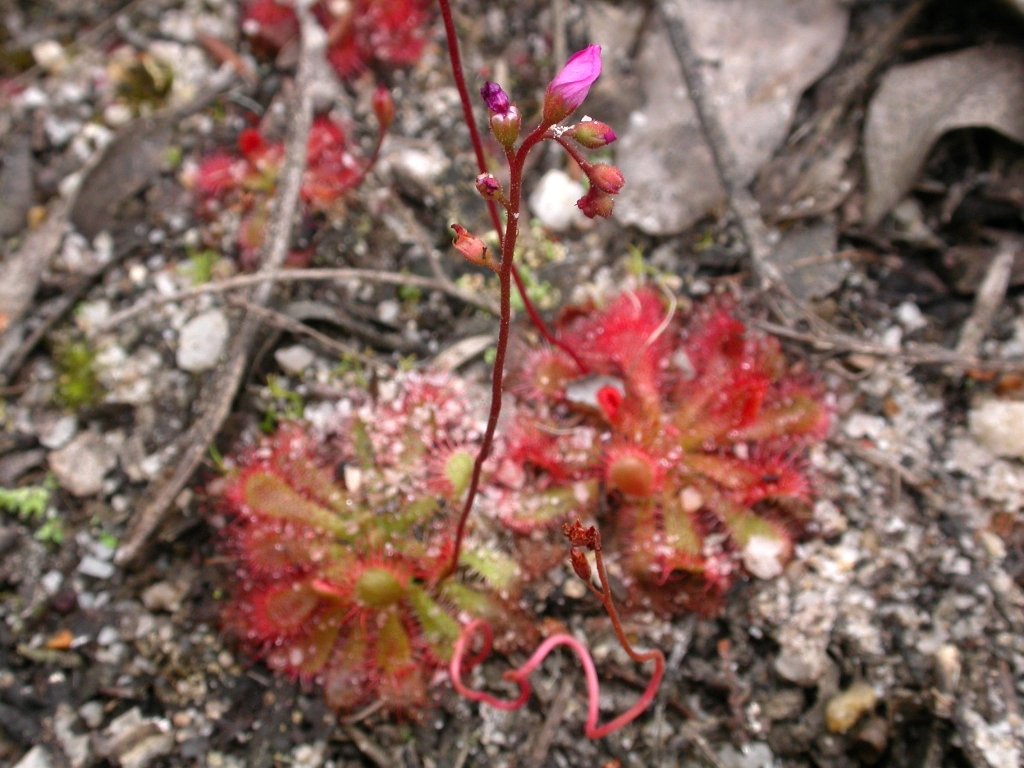Drosera spatulata
Labill. Rosy SundewTuber absent. Stem reduced. Leaves appressed to the soil in a basal rosette; lamina obovate-spathulate, narrowed to the broad flat petiole, together 8–20 mm long, 3–6 mm wide; stipules narrow, 5–7 mm long, laciniate. Inflorescences 1–5 one-sided racemes, rarely branched, to 24 cm long, c. 3–15-flowered, glandular; bracts more or less linear, 1–2.5 mm long; pedicels 0.5–3 mm long; sepals 5, narrowly ovate, 2–5 mm long, appearing glabrous (although sparsely covered with minute glands); petals 5, obovate to spathulate, 1.5–6 mm long, white or pink; styles 3, each once divided from the base to form 6 blunt ascending lobes. Flowers mainly Dec.–Mar.
VVP, GipP, OtP, CVU, GGr, EGL, EGU, WPro, HSF. Also Qld, NSW, Tas. New Zealand. Occurs in wetlands and heath communities.
Suspected to be poisonous to livestock.
Conn, B.J. (1996). Droseraceae. In: Walsh, N.G.; Entwisle, T.J., Flora of Victoria Vol. 3, Dicotyledons Winteraceae to Myrtaceae, pp. 356–361. Inkata Press, Melbourne.
 Spinning
Spinning


